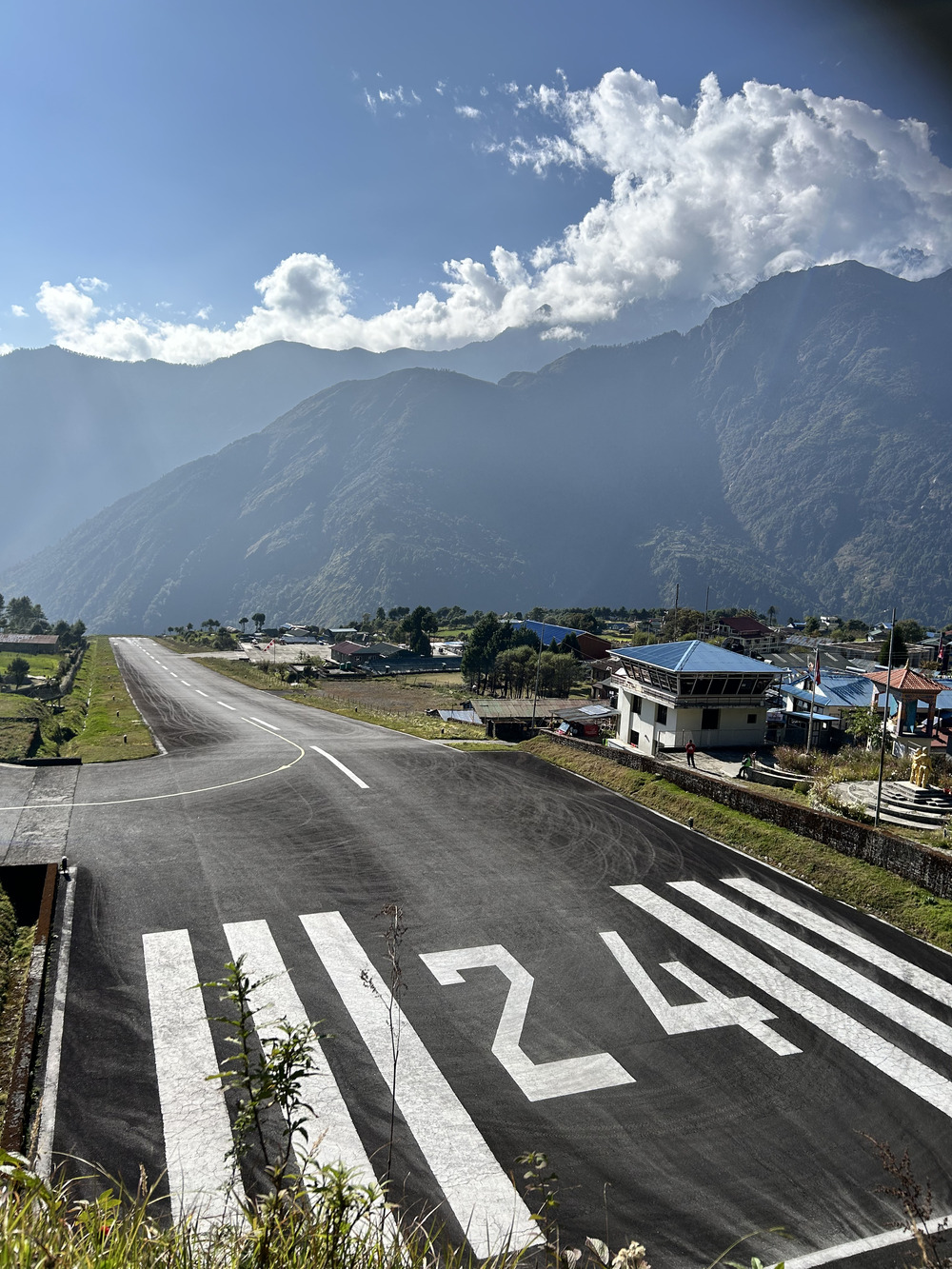
In the heart of Nepal’s Himalayas lies Tenzing-Hillary Airport, commonly known as Lukla Airport—a name that evokes both trepidation and fascination among travelers. Perched at an elevation of approximately 2,845 meters (9,334 feet), this airstrip has been labeled “the most dangerous airport in the world,” a moniker popularized by media outlets over the past two decades.
Yet, for the Sherpa community and seasoned trekkers, Lukla Airport is merely a starting point to some exotic places in the Everest region. Lukla’s runway, a mere 527 meters (1,729 feet) in length, begins at the edge of a cliff and offers no room for error—once committed, pilots must land. Despite this, local aviation professionals argue that the airport’s perilous reputation is overstated. Air Traffic Controller Ujjwal Tiwari notes, “There are other airports too which are more challenging than Lukla, Talcha (also known as Rara airport), Juphal (Dolpa airport).”
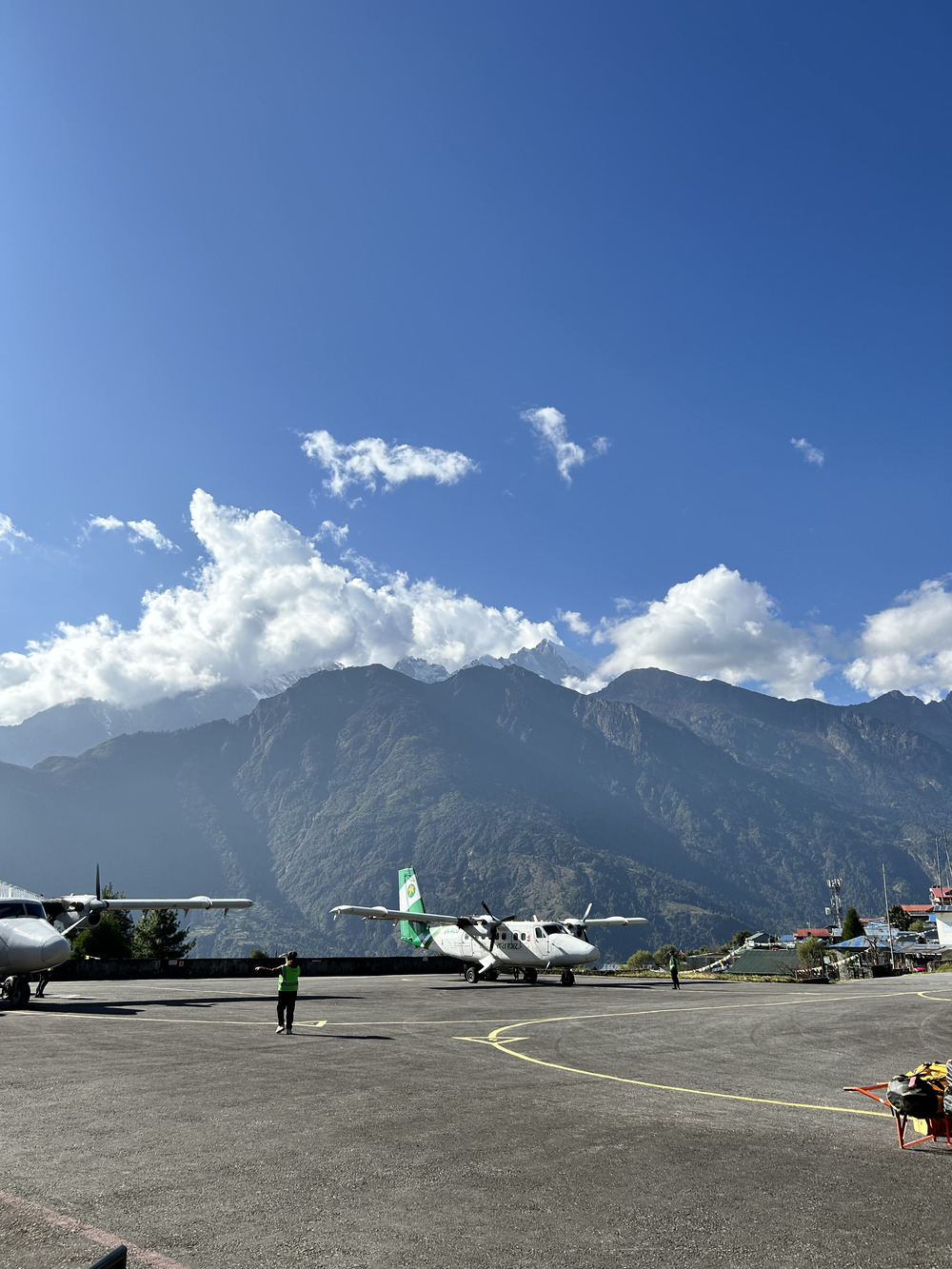
The airport’s allure is undeniable; it serves as the gateway to the Everest region, drawing adventurers from around the globe. However, the rise of helicopter tourism has begun to shift this dynamic, with choppers now reaching destinations beyond Lukla, even attempting landings at Everest’s summit. This evolution challenges the traditional notion of Lukla as the sole aerial entry point to the Khumbu Valley.
Lukla Airport must be navigated between hyperbole and reality. The airport is also a testament to human ingenuity and resilience—a place where the extraordinary becomes routine, and the routine, extraordinary.
Key Takeaways
- The flight schedule from Lukla to Kathmandu is subject to change due to weather conditions and other emergencies, with pre-information provided to passengers in case of delays.
- Tribhuvan International Airport offers a range of services and amenities to accommodate passengers in transit. During peak seasons though, you might be taking flights from the Manthali Airport, though.
- Helicopter flights from Lukla to Kathmandu offer a swift and scenic alternative to traditional flights, with details about costs, scheduling, and arrival times for 2024 and 2025.
- Alternative airports such as Phaplu and Syangboche provide additional travel options, and passengers are encouraged to review airlines for safety, comfort, and customer feedback.
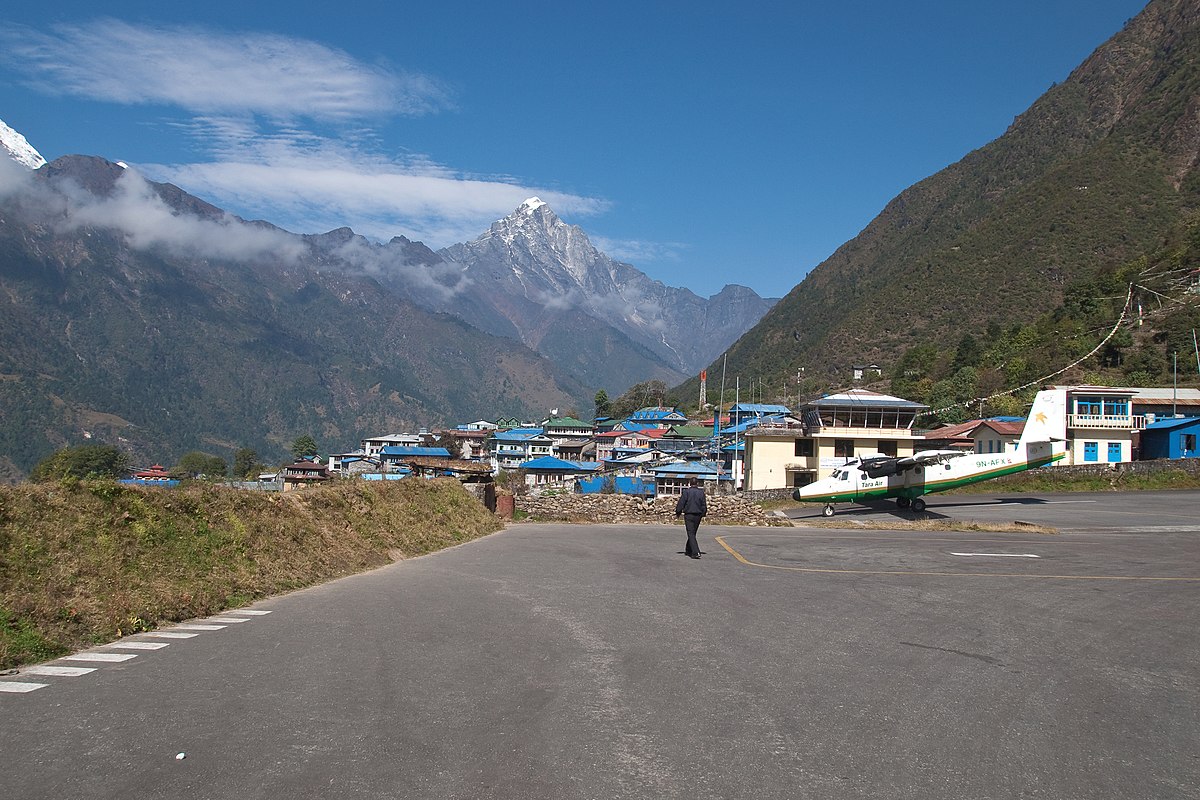
Looking across the township of Lukla, with the air strip of Lukla Airport in the foreground
History of Lukla Airport
Before the construction of the STOLport, Lukla Airport was a patch of gravel and grass, where cattle grazed and the wind whispered through sparse fields. If one were to compare it with modern runways, one would think that Lukla’s runway in the past was more of a notion of a runway.
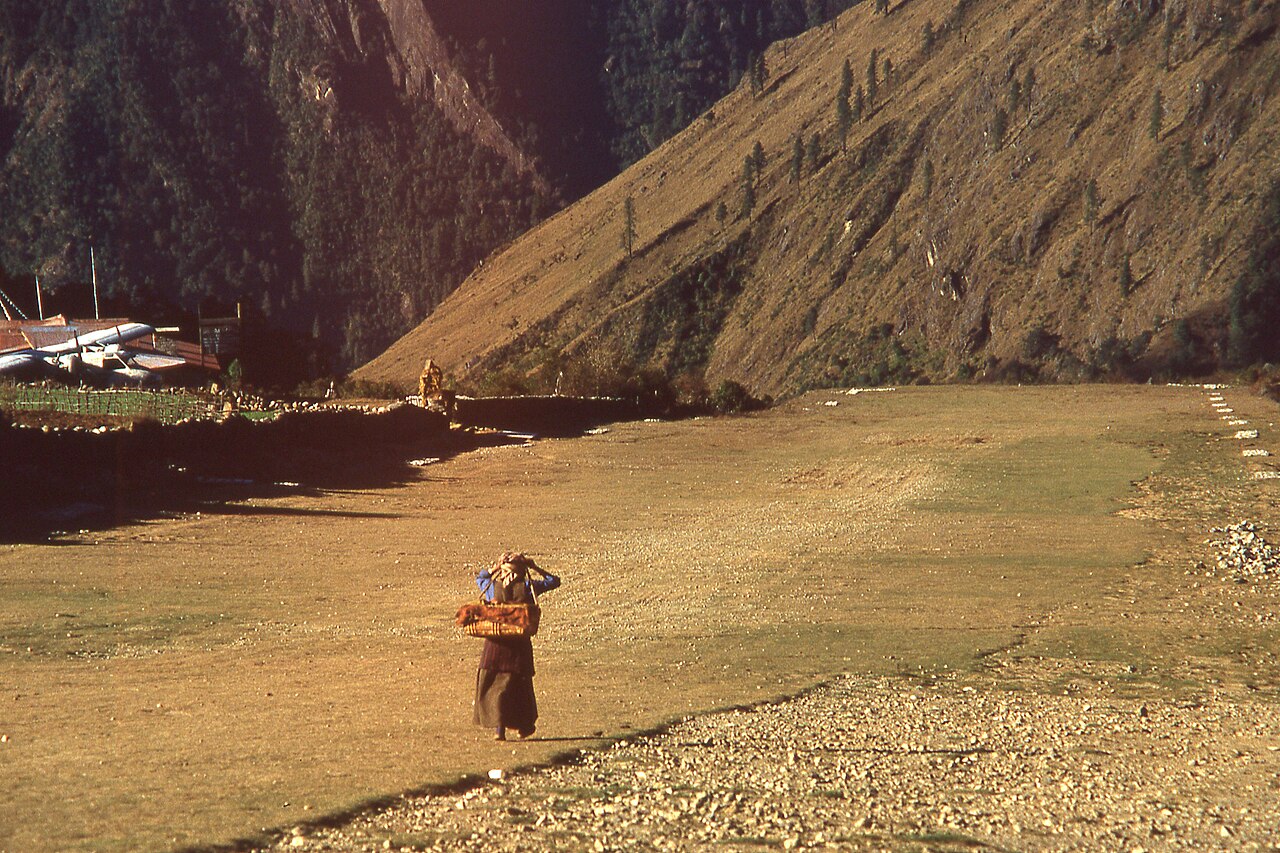
Photo: BBLBobby | Wikimedia Commons
Mingbo Airstrip, which was the first airstrip built by Hillary in the region, was perched even higher, and had proven too precarious. Hillary wondered if Lukla would be dubbed the same as he admitted, “to feeling rather tense as the Pilatus Porter circled overhead” when officials came to pay a visit to Lukla’s airport and see if would be able to handle passenger operations.
In those early days, as planes wheeled in, cattle were herded from their leisurely grazing. The airstrip was carved from fields sold by local villagers for $600—a fortune and a pittance at once. Hillary was approached by locals buy a piece of land for the Airport and with it came a sloping runway, more audacious than most: an 11.7-degree gradient, compared to the standard 2 degrees. It was, and remains, a runway that demands a quiet kind of reverence.
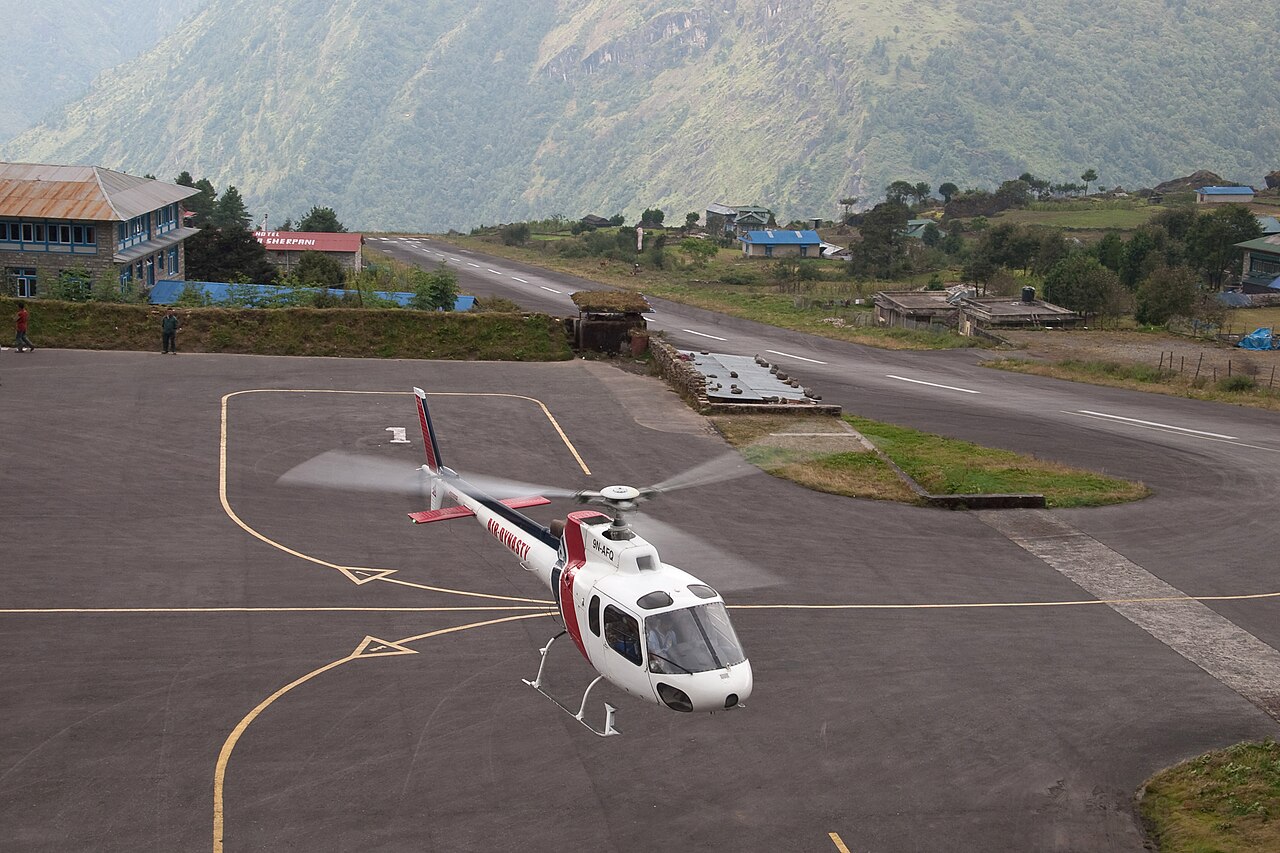
Photo: Vyacheslav Argenberg | Wikimedia Commons
Lukla’s history is etched in both triumph and tragedy. Aircraft like the DHC-6 Twin Otter carried climbers, cargo, and dreams to the Everest region, but the airstrip also bore witness to crashes, as in 2019, when a collision claimed lives and reshaped policy. A new helipad now stands as a grim necessity.
Yet life around Lukla Airport has always intertwined with the rhythms of the village: clothes drying on lines, cattle meandering in the village, patches of “gobar” on the streets. As winter snow drapes the runway, one cannot help but see Lukla for what it is—a fragile bridge between the impossible and the inevitable.
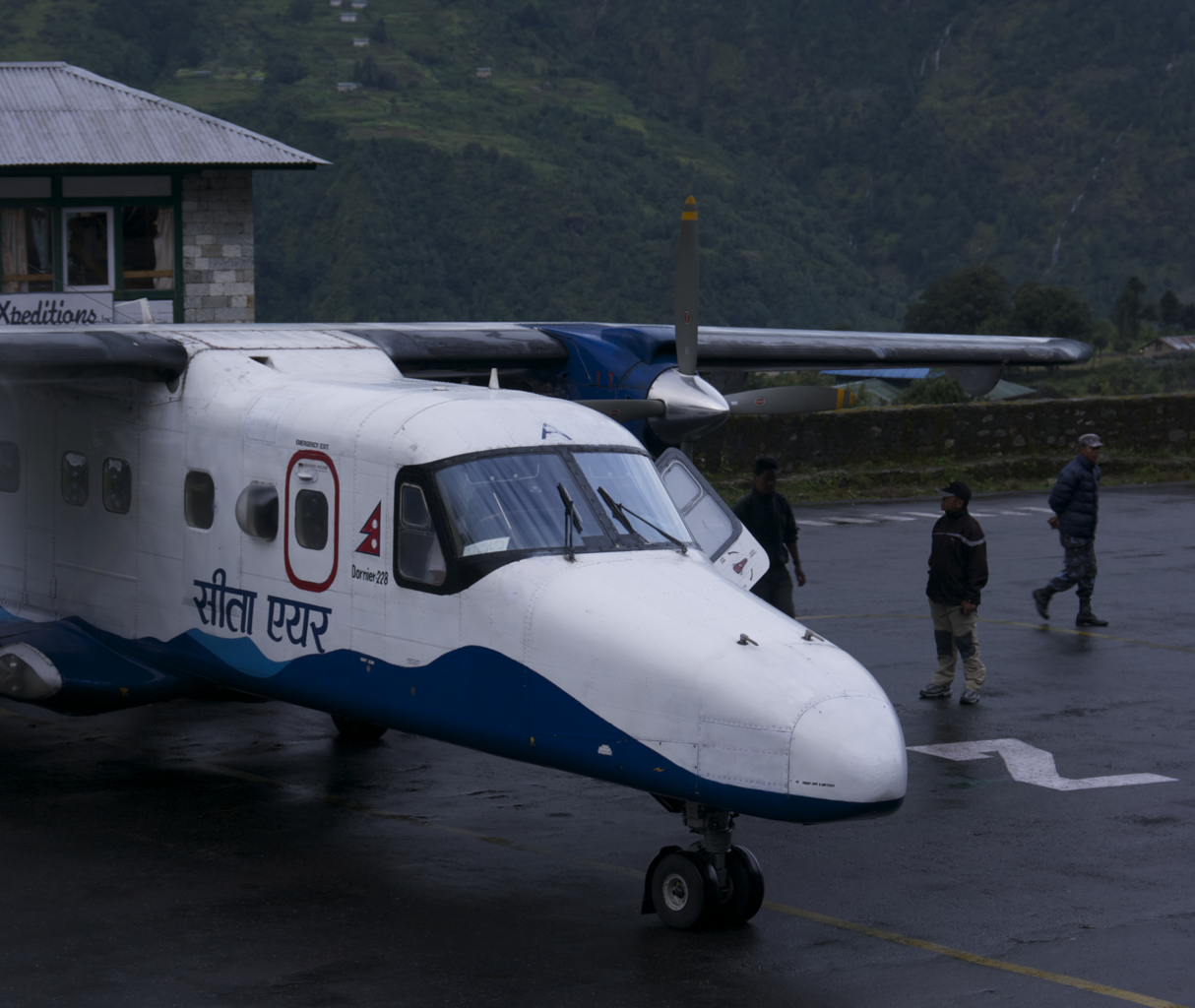
Photo: Brendan Hickey | Wikimedia Commons
Understanding the Lukla to Kathmandu Flight Schedule
Factors Affecting Flight Operations
The flight operations at Hillary Airport in Nepal, particularly between Lukla and Kathmandu (and between Manthali and Lukla) are influenced by factors such as storms, fog, mist, and wind shear The term “dangerous” is often associated with airports like Lukla due to its challenging topography, short runway, and adverse weather conditions, which can all impact flight schedules significantly. However, pilots who operate here don’t feel that the airport is as challenging as it is made out to be. Captain Rabindra Dangol, a pilot (trainer) to Lukla Airport commented:
“Landing at Lukla is not as hard as people think. As long as you stick to the Standard Operating Procedures (SOP), it’s manageable. Phaplu Airport, in the same district, is actually much harder because of its difficult approach. I remember my first flight to Simikot Airport many years ago—it shocked me. I couldn’t believe an airport could be in such a dangerous spot. I even asked the pilot, ‘Is there really an airport here?’ Compared to how challenging Simikot used to be, Lukla has always been easier.”
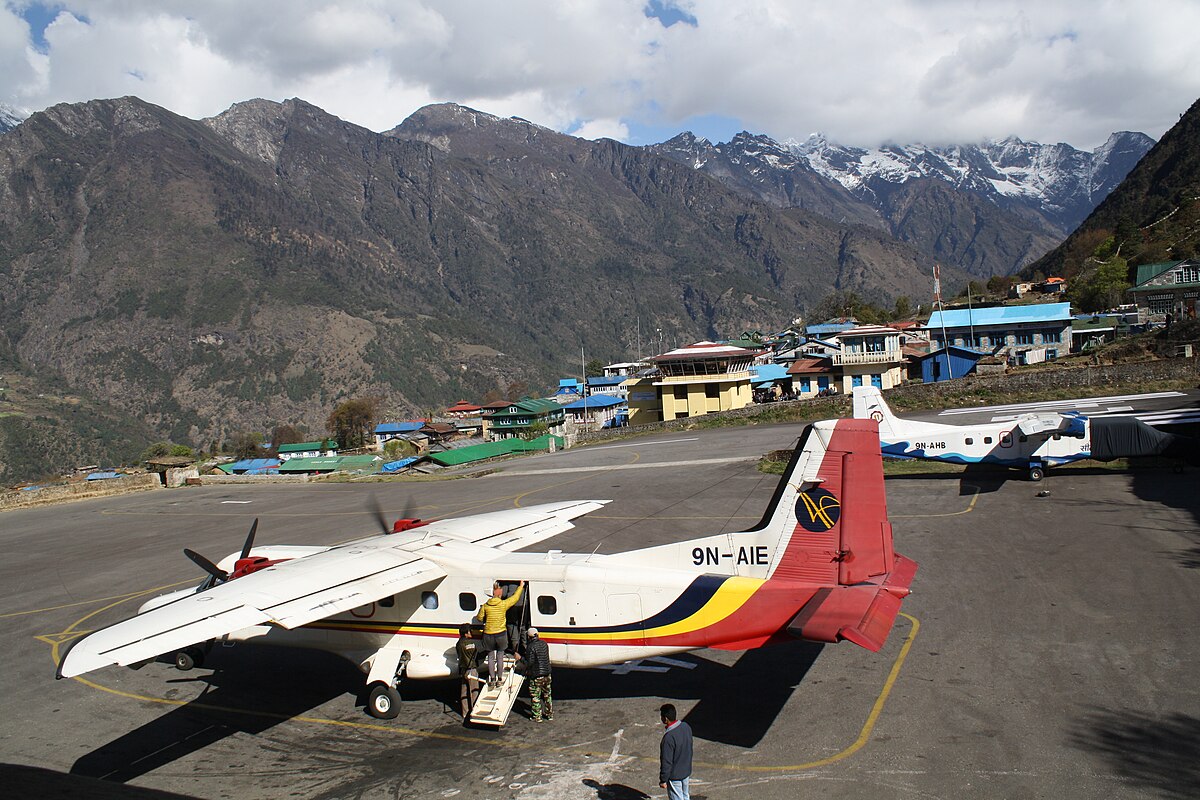
Flight schedules are subject to change without much notice, and understanding these factors is crucial for travelers planning their journey. Below is a list of key elements that affect flight operations:
- The weather can go awry in a matter of minutes, making flights subject to cancellations
- Technical considerations, as there are no aircraft maintenance facilities at Lukla.
Typical Flight Timings and Durations
The flight from Lukla to Kathmandu is a brief yet scenic journey, typically taking around 30 to 45 minutes. The schedule is subject to change due to various factors, but flights generally operate from early morning to early afternoon. The experience of flying between these two destinations is often described as breathtaking, with passengers treated to unparalleled views of the Himalayas.
Here is a snapshot of the regular flight schedule from Lukla to Kathmandu:
|
Flight From |
Flight To | Flight Time |
Arrival Time |
|---|---|---|---|
| Lukla | Kathmandu | 07:15 | 07:45 |
| Lukla | Kathmandu | 08:45 | 09:15 |
| Lukla | Kathmandu | 10:15 | 10:45 |
| Lukla | Kathmandu | 12:30 | 13:00 |
| Lukla | Kathmandu | 14:10 | 14:40 |
It’s important to note that while these times provide a general guideline, actual flight times can vary due to weather conditions or other unforeseen circumstances. Flights can also take off as early as 6:00 in the morning. Flights in the latter part of the day are more subject to cancellations due to weather.
Weather and Emergency Protocols
Understanding the weather and emergency protocols at Lukla Airport Nepal is crucial for a safe and timely journey. Lukla Airport’s weather is notoriously unpredictable, with sudden changes that can lead to flight delays or cancellations. The airport’s high altitude and unique location contribute to these swift weather shifts.
In the event of adverse conditions such as heavy snowfall in the winter (or emergencies) may result in a Lukla Airport closure. These measures are in place to ensure the safety of passengers and crew:
- Flight Schedule Adjustments: Flights may be rescheduled or cancelled based on weather forecasts and real-time conditions. Expect this all the more during peak trekking seasons when the Everest region is flooded with tourists.
- Runway Maintenance: Regular checks and maintenance are conducted to manage the Lukla Airport runway conditions, especially during snow or fog.
- Emergency Response: In case of an incident, there are established procedures for evacuation and immediate response.
Passengers are advised to stay informed about the latest weather reports and be prepared for potential changes in their travel plans.
Booking Your Flight from Lukla to Kathmandu
Advance Booking Options
Securing your flight from Lukla to Kathmandu well in advance is a strategic move for any traveler. It not only ensures your spot on the plane but also provides peace of mind, allowing you to focus on the Lukla Airport trekking experience rather than logistical concerns. Advance booking is particularly crucial during peak trekking seasons when flights fill up quickly.
By booking early, you can avoid the last-minute rush and frustration that often accompanies trying to secure a flight during the main season. This foresight can lead to a more relaxed and enjoyable journey.
Ticket Pricing and Budget Considerations
When planning your flight from Lukla to Kathmandu, understanding the ticket pricing is crucial for budgeting your trip. Prices fluctuate based on several factors, including the season, booking time, and the passport you hold. For instance, Nepali citizens can expect to pay around RS 8,000 for a one-way ticket from Manthali to Lukla while international travelers may be charged around 145 USD.
Ticket Costs for Kathmandu-Lukla Flights:
|
Passport Type |
One-way Fare |
|---|---|
| Nepali | RS 10,540 |
| International | 217 USD |
Booking your tickets in advance is highly recommended to secure your spot and potentially save on costs. It’s not uncommon for travelers to rush last-minute bookings during the main season, leading to frustration and higher prices. By booking early, you not only ensure your place on the flight but also enjoy a more relaxed trip, free from the anxiety of ticket availability.
Advance booking can be a game-changer for your travel experience. It guarantees your flight confirmation and allows you to focus on the beauty of your journey rather than logistical concerns.
Choosing the Right Departure Date
Selecting the optimal departure date for your flight from Lukla to Kathmandu is crucial. Advance booking is highly recommended to secure your spot on the flight list, especially during the peak trekking seasons of March to May and September to November. During these months, flights are in high demand due to the favorable weather conditions.
Flexibility in your travel dates can also be beneficial. If possible, consider booking your flight for a date outside of the busiest times to avoid the rush and frustration of last-minute bookings. Here’s a snapshot of guaranteed flight statuses for early June 2024:
Remember, while there are always flights between Kathmandu and Lukla, the number of choices varies. Booking well in advance ensures that you have a confirmed seat without the need to worry about ticket availability or return options.
Comparing the aircraft types operating in Lukla
Three domestic airlines—Sita Air, Summit Air, and Tara Air—fly to Nepal’s Lukla Airport (LUA), often called the world’s most dangerous airport. They use the Dornier 228-200, Let L-410 Turbolet, and De Havilland DHC-6 Twin Otter aircraft, respectively. These twin-engine turboprop planes are versatile, used not just for passenger travel but also for reaching remote, short-runway airports in Nepal like Rara and Dolpa.

These aircraft are also popular for military use worldwide. For example, India’s Defense Research and Development Organization (DRDO) recently upgraded its Dornier 228 with advanced systems, while Bangladesh operates the Let L-410. The Australian government even uses the DHC-6 Twin Otter for Antarctic missions.
In Nepal, these planes often carry freight, especially to airports like Phaplu, which serves as a hub for transporting supplies into the Khumbu region near Mount Everest. Despite their similar roles, each aircraft has unique features, performance advantages, and engineering innovations.
Dornier 228-200
Developed in Germany, the Dornier 228 first flew in 1981 and comes in versions for 15 or 19 passengers. Its updated model, the Dornier 228 Next Generation (NG), includes over 350 improvements, making it more efficient and eco-friendly with reduced fuel and noise emissions.
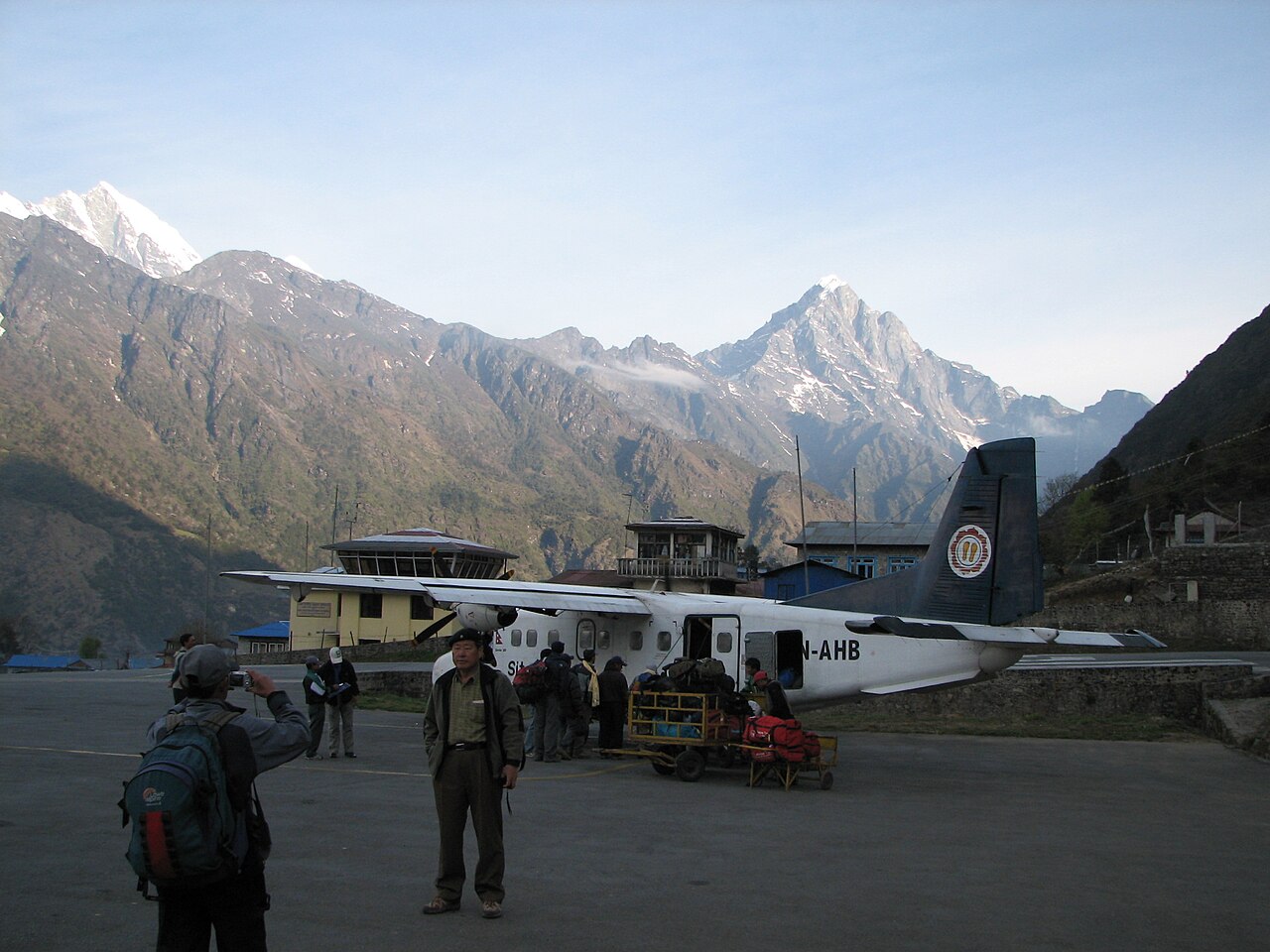
Let L-410 Turbolet
The Let L-410, designed in the Czech Republic, operates in over 30 countries. The upgraded L-410 NG features stronger engines, quieter propellers, and improved cabin space. This newer version also has a longer service life and better payload capacity, making it ideal for rugged and high-altitude environments.
DHC-6 Twin Otter
Built in Canada, the DHC-6 Twin Otter is known for its outstanding short takeoff and landing (STOL) abilities. Variants like the Guardian 400 are built for harsh environments and can be equipped with skis or floats. While its top speed is lower than the other two aircraft, its ability to handle extremely short runways makes it ideal for challenging terrains.
Key Comparisons
- Cost:
- Dornier 228: $5.2 million (2010).
- L-410 Turbolet: $3.25 million.
- DHC-6 Twin Otter: $7.25 million (2023).
- Performance:
- The Dornier and L-410 are faster, but the Twin Otter requires the shortest runway for takeoff and landing.
- Size and Interior:
- The L-410 is the largest, offering the most spacious cabin.
- The Dornier’s cabin is slightly bigger than the Twin Otter’s.
- Engines and Fuel Efficiency:
- Dornier: High power with low fuel consumption.
- L-410: Balanced performance and fuel economy.
- Twin Otter: Upgraded engines for high-altitude tasks but higher fuel consumption.
- Rate of Climb:
- Dornier: 1,500–2,000 feet per minute.
- L-410: 1,673 feet per minute.
- Twin Otter: 1,400 feet per minute.
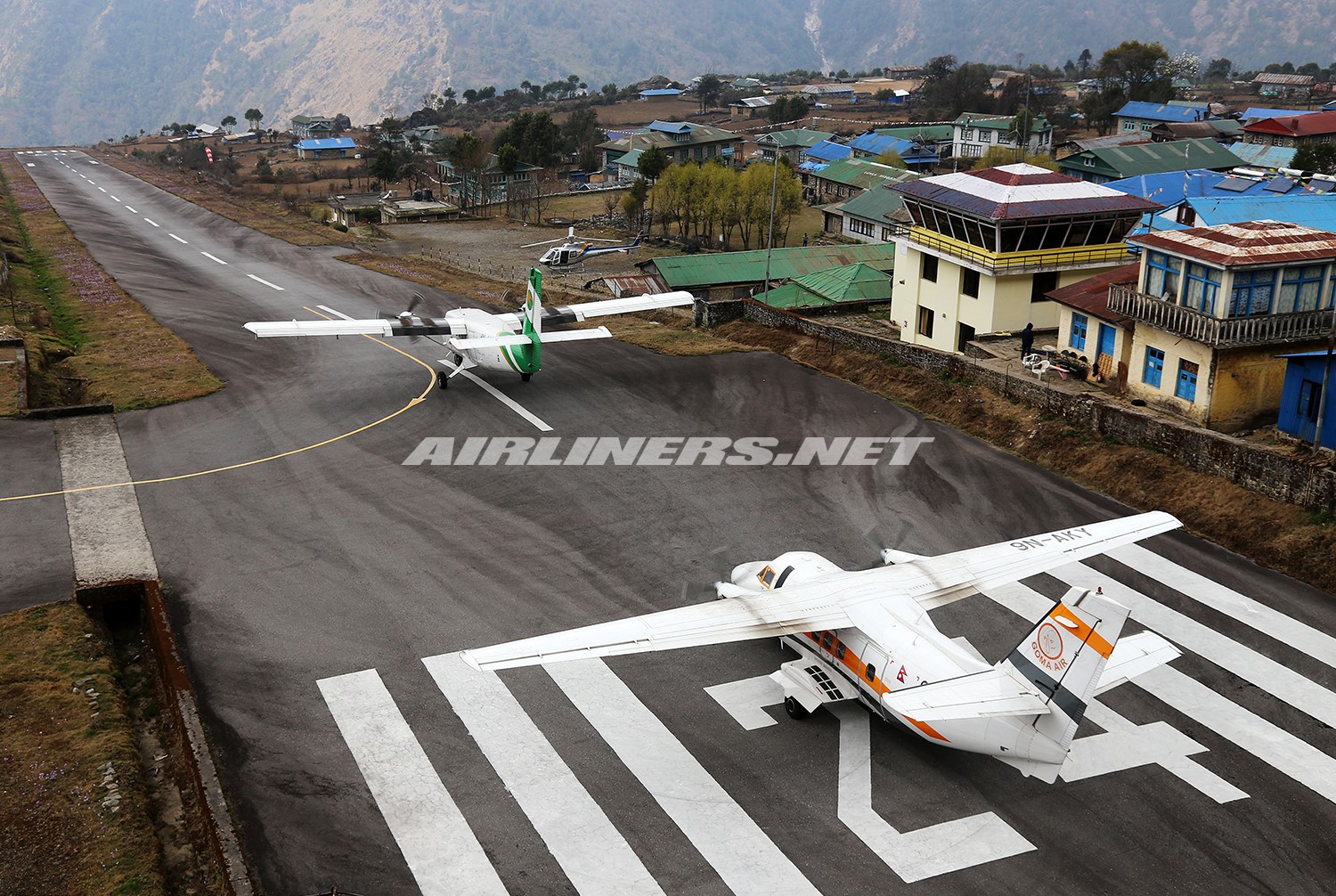
Airport Services and Amenities
Tribhuvan International Airport (TIA) offers complimentary Wi-Fi to stay connected with loved ones or catch up on work. For those with a longer layover, the airport lounges provide a peaceful retreat from the hustle and bustle of the terminal.
- Priority Check-in
- Lost and Found Desk
- Information Counters
- Currency Exchange
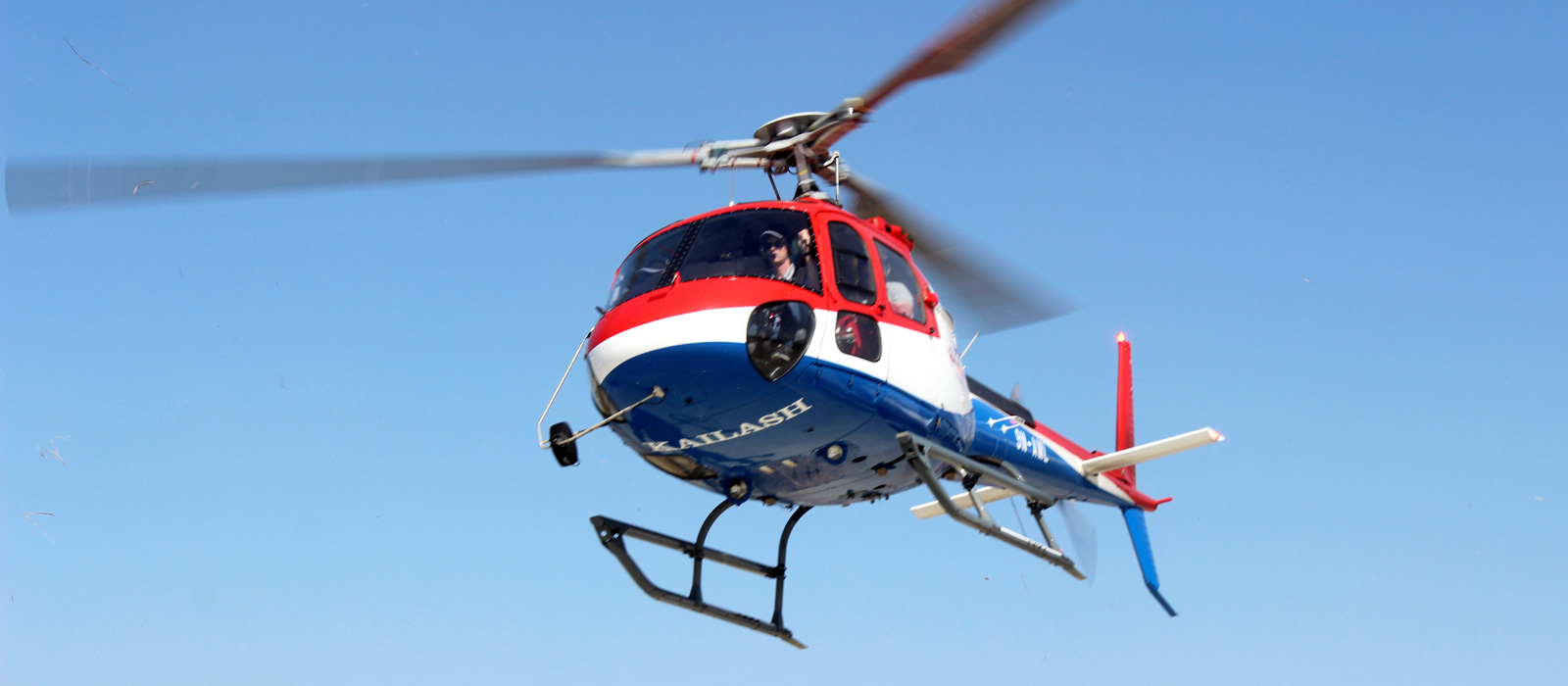
Helicopter Flights from Lukla to Kathmandu
Advantages of Helicopter Travel
Opting for a Lukla Airport helicopter service offers unparalleled advantages for travelers in Nepal. Helicopter flights are a convenient and flexible alternative to fixed-wing aeroplanes, providing a faster voyage that typically takes only 30 to 45 minutes. Also, helicopters are popular choices for people who want to go to the Everest Base Camp but don’t quite have the time or the ability to trek.
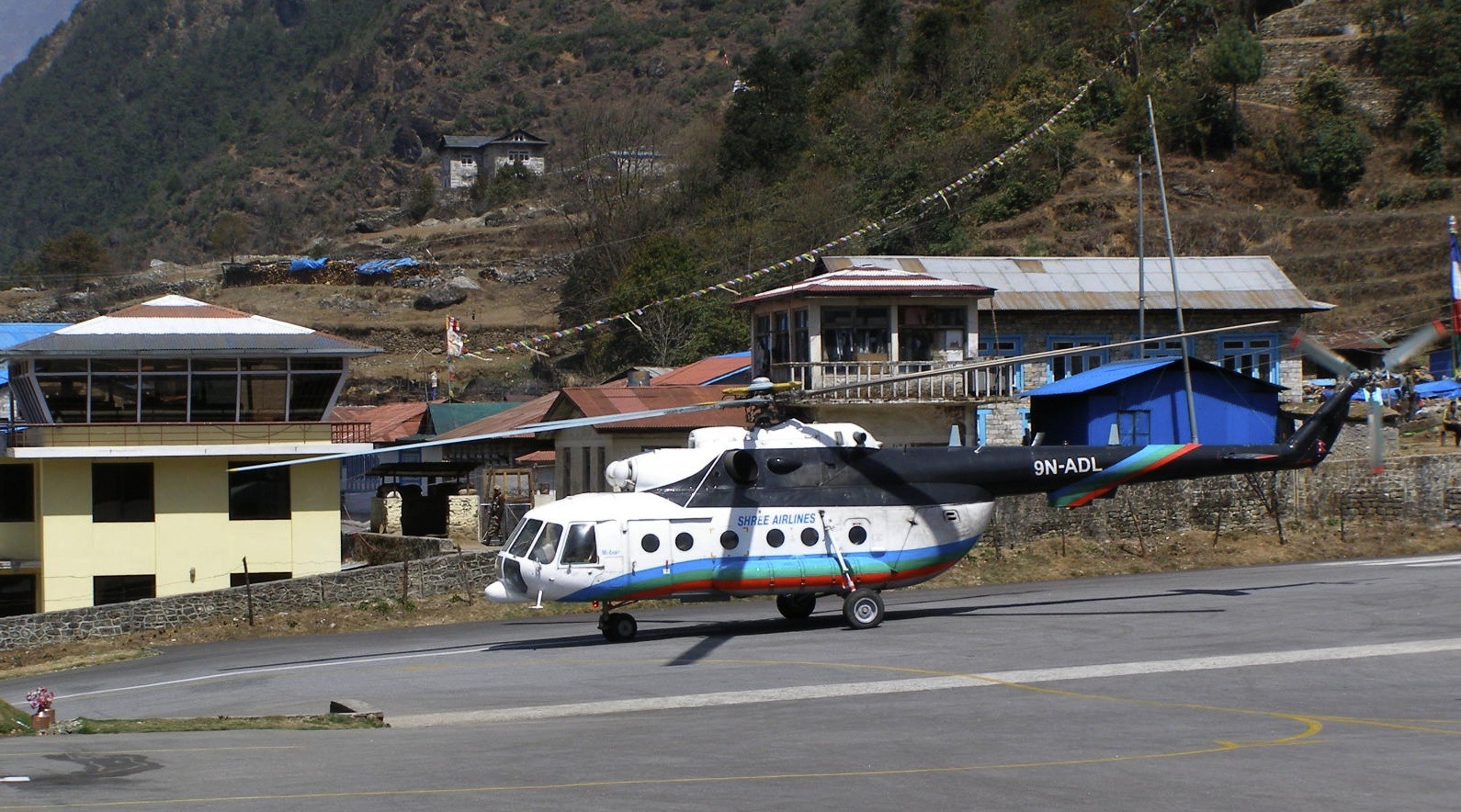
Photo: Bsk77 | Wikimedia Commons
Helicopters granting access to remote locations beyond the reach of regular airports. For those with tight schedules or in need of emergency transport, helicopter rides are frequently the preferred choice due to their efficiency and the ability to deliver breathtaking aerial views of the Himalayas.

Photo Credit: Pasang Chhiki Sherpa.
Here are some of the services offered by helicopter charters operating in the Everest region:
- Rescue from Eevrest expedition
- Photography Filming by Heli
- Pre Wedding-Photo-shoot by Helicopter
- Honeymoon Tour by Helicopter Ride
- Everest Heli Pickup
Scheduling and Arrival Times
Understanding the scheduling and arrival times for Lukla Airport flights is crucial for travelers planning their journey to or from Everest Base Camp. The regular flight schedule from Lukla to Kathmandu is subject to change due to various factors, including weather conditions and operational demands. However, a typical day sees multiple flights operating between these destinations, ensuring that travelers have a range of options to suit their itinerary.
Flight schedules are designed to provide flexibility and convenience for passengers, with the first flights typically departing Lukla Airport around 7:15 AM and the last flights leaving by mid-afternoon.
For those seeking a more personalized travel experience, helicopter flights offer an alternative with flexible scheduling. According to Nepal Trek Adventure, helicopter flights can be operated on your own schedule, providing a distinct advantage for those with time constraints or a preference for private travel.
Below is a concise table of the regular flight times from Lukla to Kathmandu:
| Flight From | Flight To | Flight Time | Arrival Time |
|---|---|---|---|
| Lukla | Kathmandu | 07:15 | 07:45 |
| Lukla | Kathmandu | 07:30 | 08:00 |
| … | … | … | … |
It’s important to note that while Lukla Airport landing times are estimated, actual arrival times may vary. Travelers should always confirm their flight details ahead of time and remain flexible with their plans. For those embarking on the iconic trek to Everest Base Camp, Lukla Airport flights to Everest Base Camp are the gateway to adventure. Choosing a reputable Lukla Airport airlines is essential for a safe and comfortable journey.
Reviews and Experiences of Airlines Servicing in Lukla
Customer Feedback
Travelers often share their experiences of flying to and from Lukla, highlighting the stunningly scenic flights and the airport’s notorious reputation. However, the passengers can sometimes queue up at Lukla airport for days, unable to catch a flight.
Sometimes, passengers with even scheduled passenger airline tickets are told that their flights are non-existent. In such a case, passengers are often forced to pay more money to hop on a chopper to get to Lukla to save the hassle of cancellation. There are often rave reviews about the wonderful scenic views, but flight cancellations often create a backlog of travelers who aren’t able to leave either Tribhuvan International Airport or Lukla Airport.
Airline Safety Records in the Tenzing Hillary aka Lukla Airport
For those who traverse the skies of Lukla, the airport offers not just access to the majestic Himalayas but also a somber remembrances of aviation accidents that have occurred here. Pilot Upendra Singh aptly described the journey to Lukla as “a snaking route in between high mountains,” a testament to its peril.
A History Marked by Tragedy
Since its inception, Lukla Airport has been the site of numerous accidents, with fifty-six fatalities recorded according to the Aviation Safety Network. The last fatal crash occurred in 2019. Notable incidents include:
- Summit Airlines Crash (2019): A Let L-410 aircraft veered off course during takeoff and collided with two parked helicopters, killing three people. The investigation cited uneven engine thrust as a factor behind the crash.
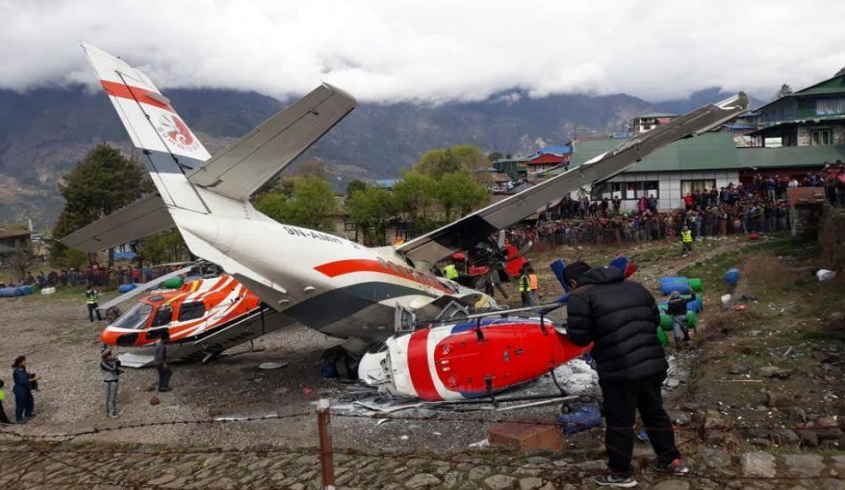
Photo: Government of Nepal
Aircraft Accident Investigation Commission, 2019
- Sita Air Disaster (2012): A Dornier Do-228 crashed shortly after takeoff from Kathmandu en route to Lukla, killing all 19 on board. A suspected bird strike and insufficient thrust during the critical climb phase were identified as probable causes.
- Yeti Airlines Tragedy (2008): A Twin Otter aircraft misjudged rapidly changing weather conditions on final approach, leading to a crash that claimed 18 lives. A deviation from of standard operating procedures (SOPs) and insufficient fire safety measures compounded the tragedy.
Common Threads Behind the Crashes
A recurring theme in these accidents is the failure to adhere to SOPs and the immense pressure placed on pilots to operate in extreme conditions. Captain Rabindra Dangol, a senior pilot and trainer, highlighted that earlier generations of pilots often bypassed protocols, a practice now less prevalent among newer pilots. Inadequate infrastructure, such as the absence of firefighting facilities, further exacerbated the dangers.
Moreover, Lukla’s unpredictable weather—marked by rapid fog formation and limited visibility—has been a constant antagonist. As noted in the Goma Air crash of 2017, pilots often struggled with situational awareness, and deviations from SOPs in deteriorating weather led to fatal outcomes.
In the years since the last fatal crash, Lukla has shown signs of improvement. The construction of a separate helipad and stricter adherence to SOPs have contributed to this progress. While the moniker of “the world’s most dangerous airport” still lingers, efforts to mitigate risks may one day allow Lukla to redefine its narrative.
Exploring Alternative Airports and Flight Routes
When the BBC designates Lukla Airport as “the most dangerous airport in the world,” you want to believe it, don’t you? The myth builds upon itself, an echo chamber of travel blogs and media soundbites until it becomes accepted as fact. But reality, as it so often does, is more complex. In the Everest region, Lukla is not an isolated oddity. Other airstrips, many just as precarious, dot the Khumbu landscape like unspoken secrets, each with its own history of daring and tragedy.
Mingbo Airstrip
Take Mingbo Airstrip, an abandoned relic perched at 15,000 feet. Sir Edmund Hillary, writing in The View from the Summit, described how it was carved by his team, as they rolled boulders and leveled snow grass. It was, for a brief moment, a lifeline—bringing supplies to Tibetan refugees and materials for the Khumjung School.
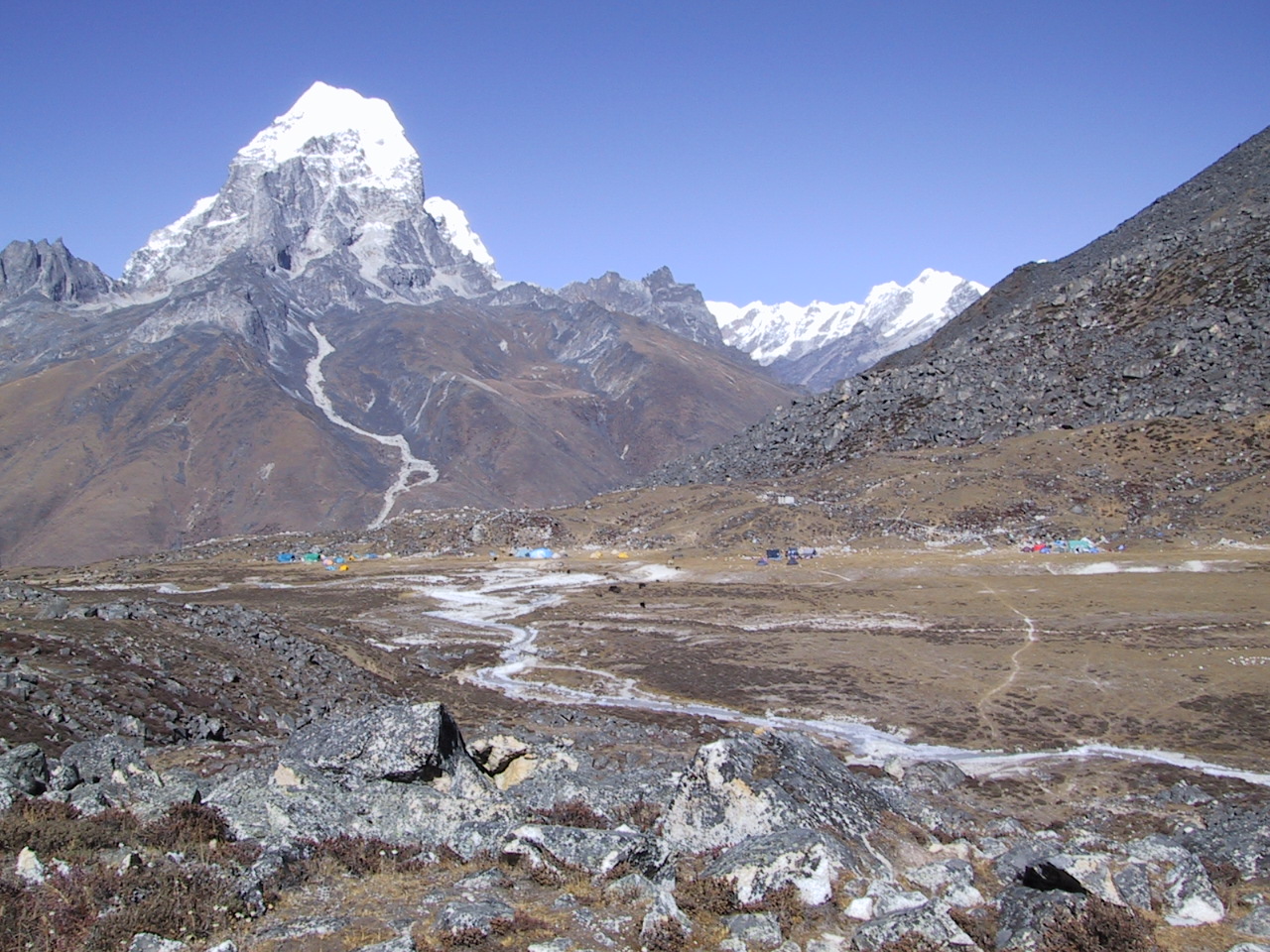
Photo: Ivan G. Somlai
But it was also treacherous. A government inspection flight ended with the aviation official vomiting and declaring the airfield closed indefinitely. “We were all severely shaken,” Hillary wrote. The airstrip now lies silent, its story buried under layers of frost and memory.
Syangboche Airport
Then there is Syangboche Airport, high above Namche Bazaar, where the mountains frame the runway like an amphitheater of stone. Beautiful, yes, but prone to ferocious winds and deep winter snows.
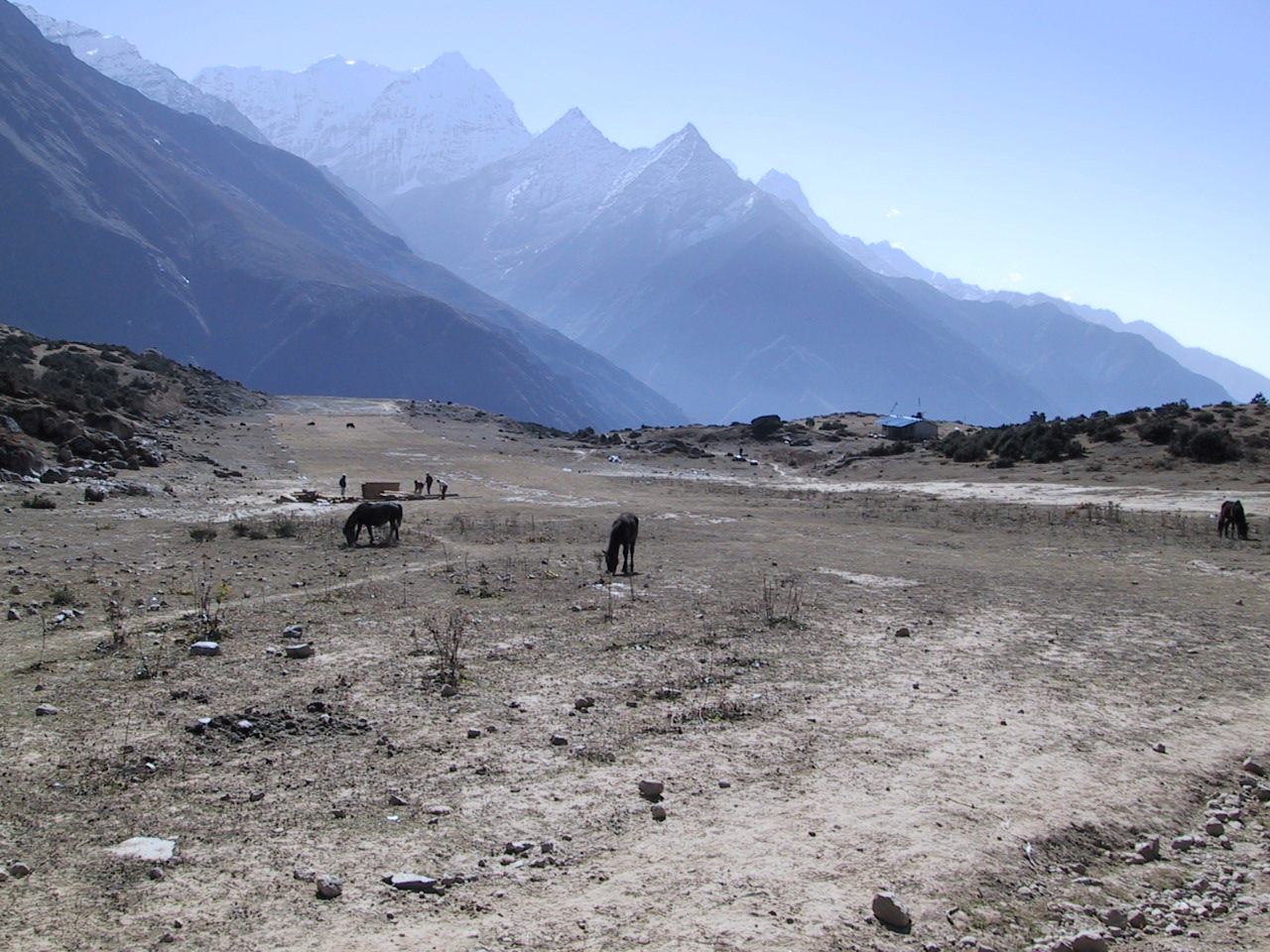
Photo: Ivan G. Somlai
Its existence is fraught with contradictions: villagers worry it might steal traffic from Lukla, while environmentalists warn of noise disrupting Sagarmatha National Park. In summer, the tarmac becomes a grazing ground for horses; in winter, it’s a frozen desert. It is not a place meant for permanence.
Phaplu Airport
Phaplu Airport, by contrast, feels almost mundane in its accessibility. It sits lower, at 8,097 feet, and you can even reach it by road. But Phaplu carries its own share of heartbreak. It was here that Hillary expanded the airstrip, unaware that he would soon lose his wife and daughter to a plane crash on their way to join him.

Photo: Rucksackschule-dresden | Wikimedia Commons
The tragedy revealed the fragility of even the best intentions, as a forgotten aileron pin turned an aircraft into a bomb. The mountain views, Hillary once said, were spectacular. But beauty here always seems to come at a cost.
Kangel Danda
And then there is Kangel Danda, a forgotten outpost of ambition. Opened in 2003, it has since fallen into disrepair—a monument to misplaced hope. Millions of rupees were poured into its construction, yet by 2015, it had generated a mere $200 in revenue while hemorrhaging thousands in expenses. Locals speak of it in tones of resignation, its crumbling boundaries and idle tower a reminder that not all dreams of progress take flight.
These airports are not just landing strips; they are markers of human audacity. They represent the will to impose order on landscapes that were never meant to yield. And yet, they also underscore the limits of that will—how the mountains, indifferent and eternal, always seem to have the final say.
Comparing Different Travel Options
When planning your journey from Kathmandu to Lukla, it’s essential to compare the various travel options available. Choosing the right mode of transportation can significantly impact your overall experience. You can opt for flights, which include both helicopter and small plane services, or consider overland methods such as bus or jeep. For the more adventurous, trekking is also a viable option.
Alternative routes may offer unexpected benefits, such as cost savings or more convenient travel times. For instance, taking a flight from Ramechhap (Manthali Airport) to Lukla can be a hassle-free alternative during the summer season. Below is a comparison of different flight options and their respective durations:
| Route | Stops | Duration |
|---|---|---|
| SDF – KTM | 3 stops | 33h 15m |
| SDF – KTM | 2 stops | 21h 10m |
While direct flights are often the quickest, they may not always be the most economical or available choice. Exploring nearby airports and considering different airlines can uncover more suitable travel arrangements.
Health and Safety Precautions
When traveling to Nepal, it’s essential to prioritize your health and safety. Always carry a copy of your travel documents and a list of emergency contacts.
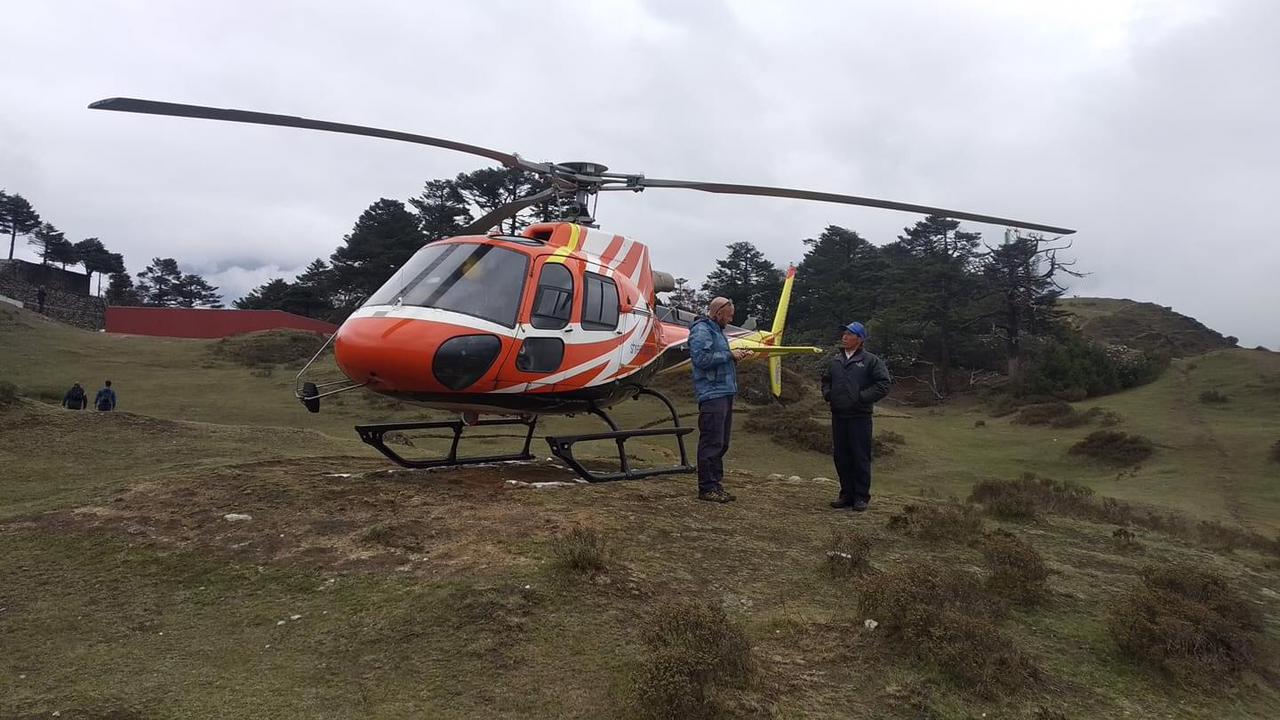
You can also ensure your safety as well as of those of others around you, if you:
- Drink only bottled or purified water to avoid waterborne illnesses.
- Be cautious with street food and opt for well-cooked meals.
- Ensure you have comprehensive travel insurance that covers high-altitude trekking and emergency evacuation.
Packing Essentials for the Himalayas
When preparing for traveling to Lukla and beyond, you need to pack efficiently. Ensure you have a good wind/rain jacket and a warm fleece jacket or jersey for the mountain weather. Footwear is equally important; opt for functional boots that are lightweight yet sturdy. Here are a few other things that might be needed:
- Hiking Poles: Lightweight and collapsible, they provide valuable support.
- Layering Thermals: Essential for maintaining body temperature.
- High-Quality Sunglasses: To protect against intense glare.
- Durable Socks: Look for ones that offer comfort and longevity, like Bridgedale.
Remember, packing light is key. Adhere to luggage allowances to avoid extra fees and ensure a comfortable journey for you and your porter.
Lastly, don’t underestimate the value of a great team to trek with. Companionship can make a significant difference in your Himalayan adventure.
Frequently Asked Questions
What is the typical flight schedule from Lukla to Kathmandu?
The regular flight schedule from Lukla to Kathmandu includes multiple departures throughout the day, typically starting from 7:15 AM and continuing until 2:45 PM, with flights lasting approximately 30 to 40 minutes.
Are flights from Lukla to Kathmandu affected by weather conditions?
Yes, flights can be affected by weather conditions. In such cases, passengers will be informed about delays, and patience is required as safety is the top priority.
How long does it take to fly from Kathmandu to Lukla?
Flights from Kathmandu to Lukla typically take about 30 minutes, with the first flight departing at 6:30 AM and the last at 2:00 PM.
Can I book flights from Lukla to Kathmandu in advance for 2024 and 2025?
Yes, you can book flights in advance for the years 2024 and 2025, ensuring you have a secured spot for your travel plans.
What is the cost range for flights from the United States to Kathmandu, Nepal?
Flight prices from the United States to Kathmandu, Nepal, range from approximately $1,967 to $2,383, depending on the route and booking dates.
What are the advantages of helicopter flights from Lukla to Kathmandu?
Helicopter flights offer style, comfort, and efficiency, avoiding the usual delays associated with traditional air travel, and providing breathtaking aerial views of the Himalayas.
What are the nearby airports to consider when traveling to Kathmandu?
Nearby airports include Pokhara Airport (PKR), Nepalganj Airport (KEP), Siddharthanagar Bhairawa Airport (BWA), Lukla Tenzing-Hillary Airport (LUA), and Biratnagar Airport (BIR).
What are the helicopter flight costs for Lukla to Kathmandu for 2024 and 2025?
Cost details for private helicopter flights from Lukla to Kathmandu for the years 2024 and 2025 are available upon request, as they can vary based on several factors.
